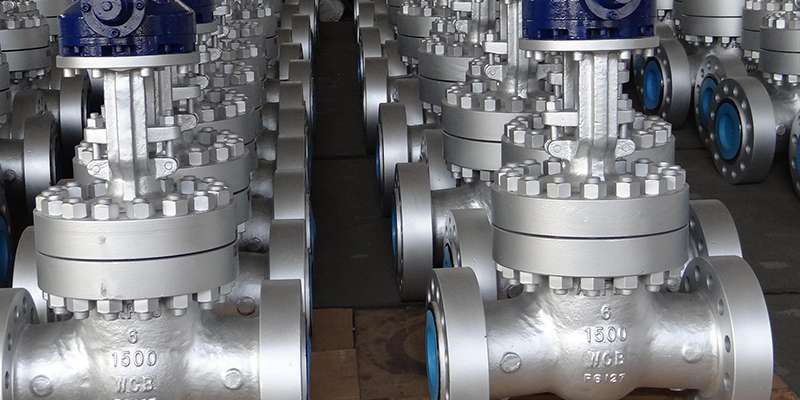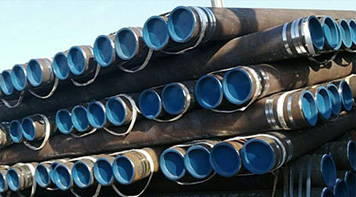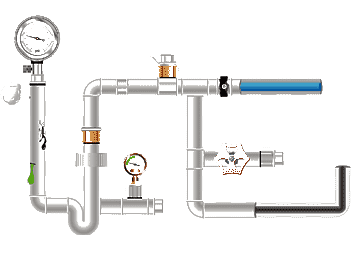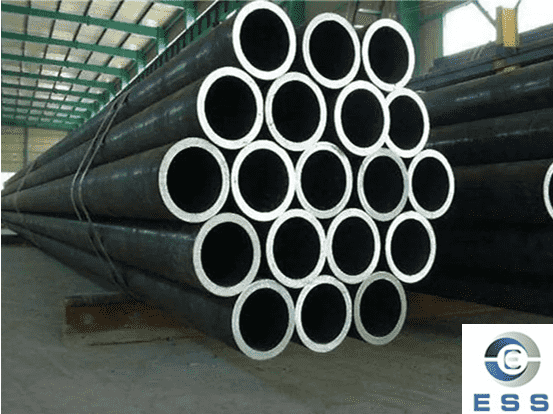ISO 11960:2020 Overview
1. Standard Name
ISO 11960:2020(E) Petroleum and natural gas
industries — Steel pipes for use as casing pipe or
tubing for wells.
2. Version
6th Edition (Replaces ISO 11960:2014)
3. Technical Committee
ISO/TC 67 SC 5 (Materials, Equipment and
Offshore Structures for Petroleum, Petrochemical and Gas Industries — Subcommittee on Casing, Tubing and Drill Pipe)
4. Major Revisions
The “Groups” grouping has been removed.
The “Product
Specification Level (PSL)” has been removed, and the
main requirements have been integrated into the main text or Annex A.
A new Annex H has been added: High Collapse
Requirements.
The non-destructive testing (NDT)
requirements for sulfide stress corrosion resistance levels have been modified.

Scope
1. Specified Materials
This document specifies the technical
delivery conditions for steel pipes:
casing pipe, tubing and pup joints;
coupling stock, coupling material and
accessory material.
By agreement between the purchaser and
manufacturer, this document can also be applied to other plain-end pipe sizes
and wall thicknesses.
2. Applicable Connection Types
This document is applicable to the
following connections:
— short round thread casing (SC);
— long round thread casing (LC);
— buttress thread casing (BC);
— non-upset tubing (NU);
— external upset tubing (EU);
— integral-joint tubing (IJ).
3. Applicable Steel Grades
This document is applicable to products
including the following grades of pipe:
H40, J55, K55, N80, L80,C90, R95, T95,
P110, C110 and Q125.
This document is not applicable to
threading requirements (For thread dimensions and inspection requirements,
please refer to API Spec 5B).
Terms, Definitions, Symbols
It defines the main terms related to casing
pipe and tubing production, and lists symbols and abbreviations (such as OD,
ID, UT, YSmin, etc.). For example:
1. Casing Pipe
Pipe run from the surface and intended to
line the walls of a drilled well.
2. Tubing
Pipe placed in a well to produce or inject
fluids.
3. Coupling
Internally threaded cylinder for joining
two lengths of threaded pipe.
Wrought steel tubular product made without
a weld seam.
Note 1 to entry: To produce the desired
shape, dimensions and properties, it is manufactured by hot-working.
5. Electric Welded Pipe
Pipe having one longitudinal seam formed by
electric-resistance or electric-induction welding, without the addition of
filler metal, wherein the edges to be welded are mechanically pressed.
6. SSC
Sulfide stress cracking.
Conformance and Normative References
A dual reference system (ISO/API/ASTM/ANSI)
is explicitly adopted, and these systems are interchangeable under conditions
of technical equivalence.
Both SI units and USC units are used, and
the two unit systems are equivalent.
Main reference standards include ISO 643,
ISO 9712, ISO 10893, and ISO 15156.
Information to Be Supplied by the
Purchaser
The purchaser shall provide:
Pipe type and quantity;
Connection type (SC, LC, BC, etc.);
Whether couplings are included;
Steel grade (especially C90, T95, and C110
must comply with ISO 15156 or NACE MR0175 requirements);
Suitability description for special
environments (such as sulfur-containing environments).
Process of Manufacture
Requirements for heat treatment,
straightening, traceability, and process validation are specified.
1. Steel must be produced using
fine-grained smelting.
2. Pipes can be seamless (S) or
electrically welded (EW).
3. High-grade steels (C90, T95, C110, Q125)
must undergo quenching and tempering.
4. Welded
pipe welds must undergo heat treatment at 540°C
or higher.
5. Typical heat treatment requirements for
each grade:
J55 / K55: No heat treatment or normalizing
is acceptable
N80 Type 1: Normalizing or normalizing +
tempering
N80Q / R95: Quenching + tempering
L80 / C90 / T95 / C110 / Q125: Quenching +
tempering, minimum tempering temperature requirement must be met.
Material Requirements
1. Chemical Composition
|
Steel Grade
|
C
|
Mn
|
Si
|
S
|
P
|
Cr
|
Mo
|
Ni
|
|
J55
|
≤0.36
|
≤1.50
|
≤0.35
|
≤0.030
|
≤0.030
|
—
|
—
|
—
|
|
N80
|
≤0.48
|
≤1.70
|
≤0.45
|
≤0.030
|
≤0.030
|
≤0.20
|
≤0.25
|
≤0.20
|
|
L80-13Cr
|
≤0.15
|
≤1.00
|
≤1.00
|
≤0.010
|
≤0.020
|
12.0–14.0
|
≤0.80
|
≤0.50
|
|
C95/T95
|
≤0.40
|
≤1.60
|
≤0.50
|
≤0.020
|
≤0.020
|
≤0.80
|
0.40–1.00
|
≤0.50
|
|
P110 / Q125
|
≤0.50
|
≤1.90
|
≤0.45
|
≤0.020
|
≤0.020
|
≤1.00
|
≤0.60
|
≤0.50
|
2. Mechanical Properties
|
Steel Grade
|
Yield Strength (MPa)
Min.
|
Yield Strength (MPa) Max.
|
Tensile Strength (MPa)
Min.
|
Elongation (%)
Min.
|
|
H40
|
276
|
—
|
414
|
21
|
|
J55
|
379
|
—
|
517
|
19
|
|
N80 Type 1
|
552
|
—
|
689
|
18
|
|
L80
|
552
|
—
|
655
|
18
|
|
C95
|
655
|
—
|
758
|
15
|
|
T95
|
655
|
862
|
758
|
15
|
|
P110
|
758
|
965
|
862
|
15
|
|
Q125
|
862
|
1035
|
931
|
14
|
3. Impact Toughness (Charpy V-Notch)
Longitudinal CVN test is required for
high-grade steels (L80, C90, T95, C110, Q125);
Typical minimum absorbed energy: ≥40 J (C90/T95) or ≥54 J
(Q125);
Test temperature: room temperature or -20°C as
agreed.
4. Sulfide Stress Corrosion (SSC)
Grades C90, T95, and C110 must pass the
NACE TM0177-2016 Method B test.
5. Hardness
Maximum hardness (HRC) of L80 / C90 / T95 /
C110 ≤ 23; Maximum hardness (HRC) of Q125 ≤ 25.
Dimensions and Tolerances
Standardize permissible deviations for pipe
outer diameter, wall thickness, and weight. Clearly define dimensional
deviations and marking methods for different connection types.
1. Outer Diameter Range
26.7 mm ~ 406.4 mm
2. Wall Thickness Range
4.83 mm ~ 25.4 mm
3. Length Grades
Range 1: 6.10 m ~ 7.32 m
Range 2: 8.53 m ~ 9.75 m
Range 3: 11.58 m ~ 12.80 m
4. Tolerances
Outer Diameter (OD): ±0.75% or ±0.79 mm (whichever is greater)
Wall Thickness (t): -12.5% ~ +10%
Weight: ±1% (single
piece), ±0.5% (batch average)
Straightness: ≤0.002
L (i.e., maximum bend of 2 mm per meter)
Length: ±0.5% or as
required by Table C.27
5. Thread Ends
API round thread or trapezoidal thread;
Special Ends End-Finish) subject to
separate agreement.
Inspection & Testing
Chemical Analysis: Furnace analysis and
product analysis;
Mechanical Properties: Tensile, impact,
hardness, SSC;
Hydraulic Testing: 100% for each pipe;
Non-Destructive Testing (NDE):
Ultrasonic, magnetic particle,
electromagnetic, or magnetic flux leakage testing;
Compliant with ISO 10893 series and ASTM
E213/E570
Protection and Marking
1. Each steel pipe must be marked with:
steel grade, size, heat grade, manufacturer, and standard number;
2. Use color codes to distinguish steel
grades;
3. Thread protector design verification;
bare steel protectors must not be used for L80 13Cr;
4. Anti-corrosion coating must be applied
for long-term storage or transportation.
Summary
ISO 11960:2020 is a globally unified
standard for the manufacture and inspection of well casing pipe and tubing in
the oil and gas industry, comprehensively specifying steel grades, mechanical
properties, chemical composition, dimensional tolerances, and inspection
procedures. The new version emphasizes high slump and sulfur resistance
requirements, eliminates the old PSL system, makes the standard structure
clearer and more applicable, and is fully equivalent to API
5CT.













 Eastern Steel Manufacturing Co.,Ltd not only improve product production and sales services, but also provide additional value-added services. As long as you need, we can complete your specific needs together.
Eastern Steel Manufacturing Co.,Ltd not only improve product production and sales services, but also provide additional value-added services. As long as you need, we can complete your specific needs together.










